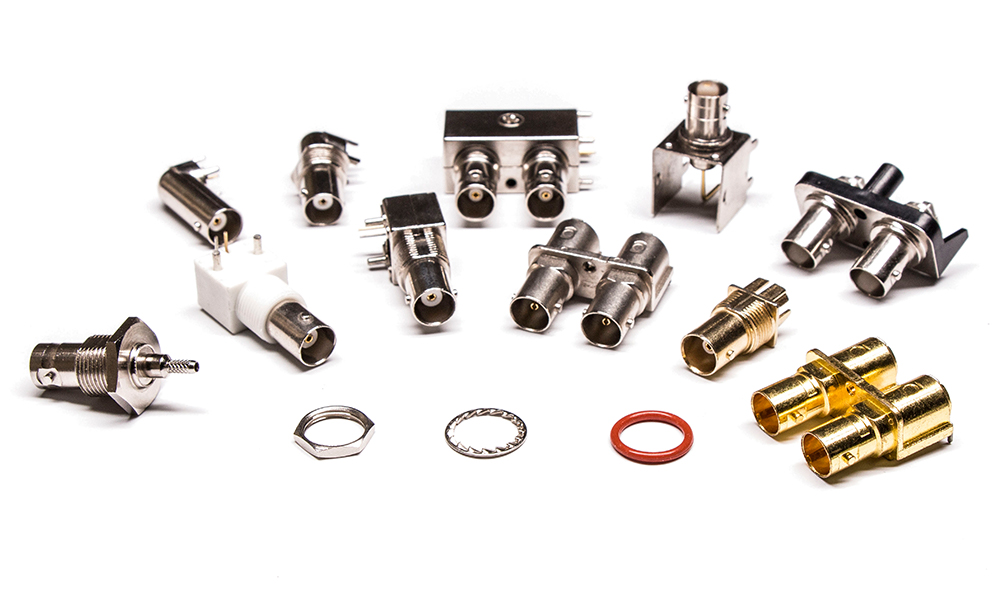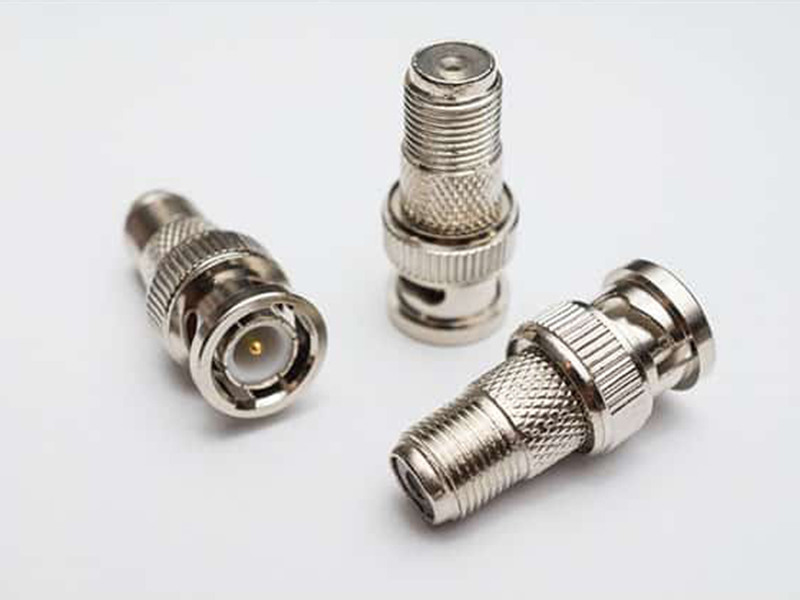The classification of BNC connectors is basically the following three
BNC circuit boards are classified according to the connection form: nut fastening type, screw fastening type, and welding type.
BNC adapter type: Mainly convert the BNC female connector to a variety of other connectors.
BNC connection type: Mainly connect the BNC female connector to BNC female connector or BNC male connector.

Each quality product possesses distinctive features, and BNC connectors are no exception. Superior BNC connector products typically excel in mechanical and environmental performance.
Mechanical Performance: A crucial determinant of a BNC connector’s quality is its mechanical properties. Mechanical performance primarily assesses whether the insertion and extraction forces meet the industry standards. Excessive insertion force can make connections difficult and pose safety risks over prolonged use. Conversely, a high pull-out force is preferred, as insufficient force can lead to disconnections, affecting connector lifespan and overall system safety.
Environmental Performance: Environmental performance signifies a connector’s ability to withstand various conditions, including high temperatures, high humidity, and resistance to impact, compression, and vibration. A high-quality connector should operate reliably even at extreme temperatures, exceeding 200 degrees Celsius, without experiencing damage. Moreover, it should undergo rigorous testing at temperatures as low as minus sixty degrees Celsius. Environmental resilience is paramount, especially for devices operating in diverse and challenging environments.
Despite their small size, BNC connectors play a significant role in ensuring seamless connections. These connectors act as vital links, directly impacting the performance and longevity of the connected devices.

